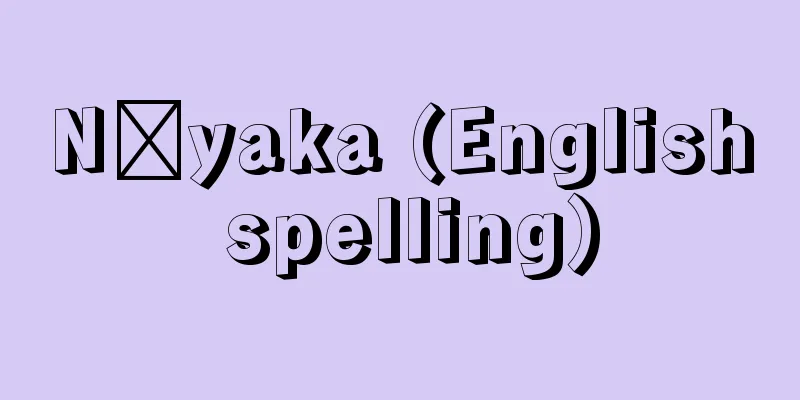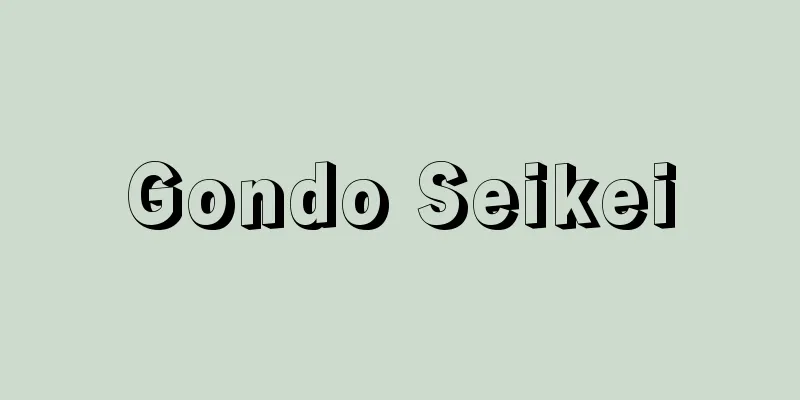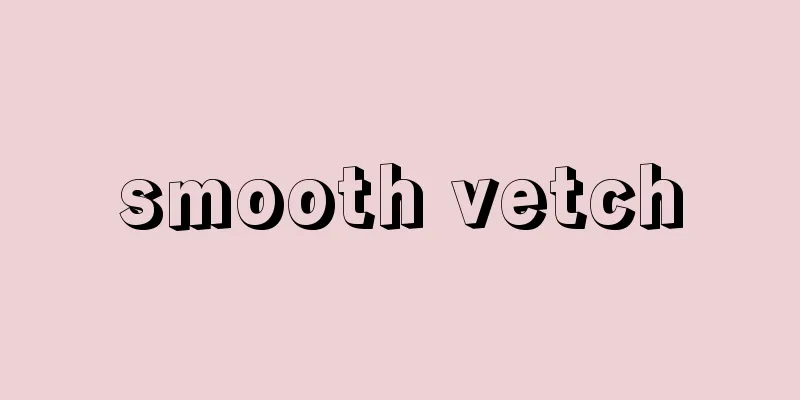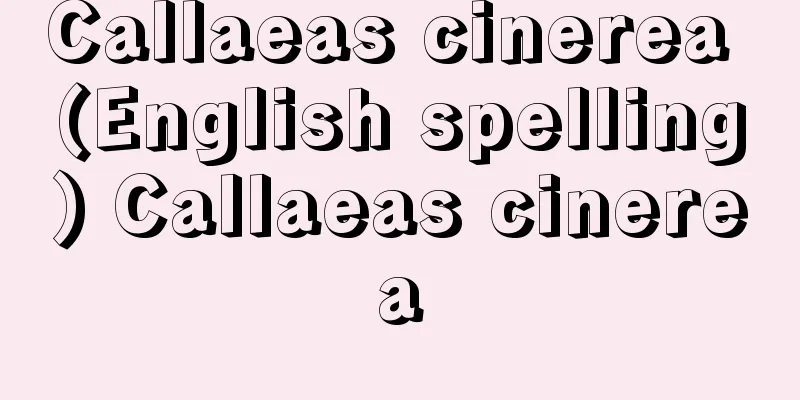Beauty - Beauty
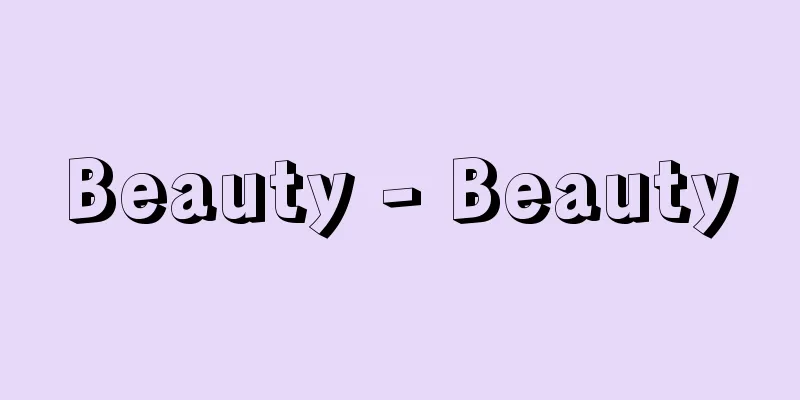
|
It means to make one's appearance beautiful. Humans must have had an extraordinary interest in beauty in all ages. It must have been pursued tirelessly, regardless of nationality, ethnicity, or religion. Moreover, not only women, but also men must have made efforts to improve their appearance, even if their interests differ. However, in times when the peoples of the world did not have contact with each other, the concept and form of beauty may have been far removed from that of modern times. There must be countless examples where "beauty" for one ethnic group was seen as strange by another ethnic group, or a form of beauty that was abhorrent to people in another region was considered desirable by a distant ethnic group. In addition to differences between ethnic groups, it is also possible that even within the same ethnic group, there were strict restrictions on beauty methods and special customs depending on the class, job, or age group of the people. We can get a fragmented glimpse of this by tracing the history of makeup and clothing, and even archaeology and anthropology more broadly. Here we will look at modern beauty, which has undergone such historical changes and has established a common way of expressing itself. Broadly speaking, "beauty" can be divided into external beauty, including hairstyles, makeup, clothing, etc.; internal beauty, which seeks to beautify hair and skin nutritionally; and mental beauty, which is the state of mind, that is, the relationship between psychology and skin and facial expressions. There is also beauty that aims to beautify the overall proportions of the body. The Cosmetologists' Law (Law No. 163 of 1957) defines beauty as "for the purposes of this law, making the appearance beautiful through methods such as permanent waves, hairdressing, and makeup" (Article 2). The scope of beauty in this context can be divided into (1) head beauty, (2) cosmetic techniques, and (3) whole-body beauty. [Fumisako Yokota] Head beautyScalp and hair treatmentTo break it down further, these include scalp massage, brushing, hair removal, shampooing, and hair treatment. (1) Scalp massage Stimulating the scalp improves blood circulation and effectively sends nutrients from the capillaries to the hair. The method is: (1) Sprinkle hair tonic all over the head, (2) Use the pads of your fingers to make strong spiral movements from the top of the forehead, gradually moving to the top of the head. (3) Spark the entire head (press your fingers firmly against the scalp and then quickly release). You can also apply light pressure with the fingers of both hands. (4) Place the left palm on the top of the head and lightly tap the top of the left hand with your lightly clenched right hand (from the top of the head to the nape of the neck). (5) Press diagonally across the temples with both hands. (2) Brushing: Brushing may be for the purpose of promoting hair growth or for the purpose of removing dirt. In either case, it is a good idea to brush consistently, morning and evening, with a boar bristle or hog bristle brush. (3) Removing split hairs Once hair has been damaged, it will not grow any more, so cut off the tips of the hair as soon as possible. If you divide the hair into small strands and twist them toward the root, the damaged hair will stick out from the normal hair flow, so you can cut them off one by one with scissors. (4) Shampooing: Shampoo is used to cleanse the hair and scalp by removing dirt, sebum, dandruff, and residual hair products. (5) Hair treatment This is done to restore abnormal hair as much as possible to normal and to prevent damage. A chemical to repair damaged hair is applied and steamed (at beauty salons, this is done in a steamer, but at home, it is better to put on a plastic cap before bathing and use the steam to open the pores and allow the chemical to penetrate). For damaged hair, a treatment agent is used to replenish oil and moisture, and an oily film is created on the surface of the hair to moderately suppress the evaporation of moisture from the hair. [Fumisako Yokota] HaircutThis is done to give your hair the length and shape you desire. [Fumisako Yokota] PermPermanent waves aim to artificially create wavy curves in the hair. [Fumisako Yokota] Hair DyeHair dye (including hair bleach) is a permanent hair dye that uses chemicals to set the color of hair. There are methods using vegetable hair dyes, mineral hair dyes, and synthetic hair dyes. Hair bleach uses an oxidizing agent to break down melanin pigments and lighten the hair pigment. It is a technique to bleach dark hair to the required degree, or to dye hair to the desired color by using the bleaching effect. [Fumisako Yokota] Hair SettingThere are several methods, such as wetting the hair with setting lotion, using pins, clips and rollers to create a basic shape (original set), drying with a hairdryer, removing the pins, clips and rollers, and then styling with a comb or brush, or blow-drying the hair after cutting it and then styling it with your fingers or a brush while applying hot air from a hand dryer, or using a lamp dryer to give it a perm and then shaping it while it dries naturally. However, there is no set style for any of these methods, and styling techniques have become more diverse as fashions change. There are also ironing techniques. The marcel wave, invented in France, uses the heat of a marcel iron (an iron for creating waves) to temporarily transform the hair, then creates waves with a comb and iron. [Fumisako Yokota] wigIt refers to artificial hair tied together to make up for areas where there is little hair. Japanese hairstyle wigs are no longer commonly used, except for weddings and special occupations. Western wigs have a long history, but one imported wig that was once popular was the "wig." Recently, Japanese-made wigs for men have also become quite popular. Partial wigs, or hair pieces, are useful for adjusting the length of hair and compensating for volume. [Fumisako Yokota] Cosmetic TechnologyFacial BeautyThe aim is to regulate the physiological functions of facial skin. This treatment method uses physical and chemical stimulation to remove excess fat and promote blood circulation to create smooth skin. They are broadly divided into massage methods, pack methods, and methods using beauty devices, but all of them are performed with the aim of promoting the physiological functions of the skin and making the face healthier and more beautiful. Massage methods involve massaging the face using finger techniques, while pack methods involve applying a pack to the face and leaving it for a certain period of time to dry. In addition, there are other types of cosmetic procedures that use equipment, such as ultraviolet light, infrared light, or rubber suction cups, while methods such as passing an electric current through the skin depending on the condition and symptoms of the facial skin should only be performed by a specialized technician. [Fumisako Yokota] MakeupThe aim is to express effective beauty by compensating for flaws in one's facial features and bringing out one's individuality. [Fumisako Yokota] mani pediThis refers to makeup in a broad sense to the hands and feet. It does not only refer to beautiful nails, but also to the beauty of the hands and feet as a whole. [Fumisako Yokota] Skin removal and bleachingThe main method of hair removal is to remove fine hairs using depilatory creams, but there are also other methods such as waxing and, by professionals, electrolysis. Bleaching refers to lightening the skin color caused by summer sunburn or winter snow tan, but it is also important to bleach gradually as needed. Stimulating the skin all at once is not good for the skin. On the other hand, there are cases where you want to tan your skin for the sake of healthy beauty, but in that case, apply plenty of oil and allow the skin to get used to being in the shade for a long time. After tanning, it is also necessary to use a soothing carmine lotion and replenish moisture with a nourishing cream. [Fumisako Yokota] Whole body beauty(1) Weight control The main purpose is to lose weight, and sometimes to gain weight, or to maintain weight. To achieve this, muscle exercises such as beauty exercises, a balanced diet, sweating techniques to improve the skin's metabolism, and exercise using exercise machines are all effective. (2) Proportion control The purpose is to maintain a well-proportioned body. This involves self-training to slim the legs and tighten the waist, exercising with various exercise machines, and beauty brushing to firm the bust and tighten the abdominal muscles. (3) Relaxation: For the purpose of providing relaxation to both the body and mind, it is a good idea to combine hand massage, infrared light exposure, sweating in a sauna bath, and other methods of visual and auditory relaxation such as gentle music and soft colors. (4) Whole-body beauty methods: Consider combining all effective methods, such as massage, packs, and brushing. [Fumisako Yokota] The future of beautyEveryone has a desire to stay young forever, to look younger than they actually are. This desire will probably continue until the day we die. They say that history repeats itself, but when we look back at changing trends, we often find that they are merely modern expressions of things from several years ago. So, something that is new and popular is only for a moment, and then it moves on to the next trend. In this environment, people continue to think day and night about how to express their own beauty. Naturally, the way of expression and values will change depending on the person's environment, occupation, etc. Therefore, we should cultivate our aesthetic sense on a daily basis and boldly try to express our individuality . In other words, we can say that we are beginning to look for the roots of beauty in the mental aspect of aesthetic sensibility. Or perhaps this is simply a trend. But can we not at least say that expressions of individuality are at the forefront of fashion right now? However, no matter how many cosmetic procedures you undergo, if you are not healthy, your attractiveness will be halved. In order to maintain your health, you must think about your daily diet, which is closely related to your own physical strength. You must take in enough nutrients necessary for maintaining your health and then eliminate excess calories. The biggest enemies of beautiful skin are not only overeating (including consuming too much spices and salt), but also constipation and staying up late. Avoid irregular meals, exercise moderately, and try to get enough sleep. In particular, remember that the time between 11pm and 1am is considered the time for the production of new skin cells. The word "esthétique," which has become more and more common recently, is originally a French word meaning beauty or aesthetic sense, and as a beauty term it can refer specifically to beauty techniques, tools, and makeup techniques for creating beautiful skin and body, or even the business formats in which they are used. Also, an esthetician (or an esthetician for women) can refer to a technician in facial beauty, full-body beauty, makeup, manicures, pedicures, etc. In general, aesthetic medicine is broadly divided into cosmetic surgery (such as double eyelid surgery and rhinoplasty), which is a surgical field, and internal medicine or physical therapy. In addition, the term aesthetic medicine is sometimes used to collectively refer to whole-body beauty, which aims to beautify the whole body through the skin, beauty diets, beauty exercises, etc. [Fumisako Yokota] "The History of Beauty" by J. Pensées and Y. Delandre, translated by Noriko Aoyama (Hakusuisha, Que sais-je Paperback)" ▽ "A Walk Through the History of Beauty" by Shinjiro Koide (Josei Mode Co., Ltd., Beauty Paperback)" ▽ "The 25-Year History of Beauty Development" by Morihiro Kataoka (Josei Mode Co., Ltd., Beauty Paperback)" [Reference items] | | | | | | | | | | | | |Source: Shogakukan Encyclopedia Nipponica About Encyclopedia Nipponica Information | Legend |
|
容姿を美しく整えることをいう。いつの時代でも、人間は美容について並々ならぬ関心を抱いたに違いない。それは国家や民族、宗教の違いを越えて、飽くことなく追求されたはずである。しかも女性ばかりでなく、関心の方向は異なるにしても、男性もそれなりの努力を払っているのではなかろうか。もっとも、地球上の民族がそれぞれの交流をもたなかった時代には、美容に対しての概念も様態も現代とはかけ離れたものだったかもしれない。ある民族にとっての「美容」が、他の民族からみれば奇異と映ったり、また別の地域の人々には忌むべき美のあり方が、遠く離れた民族には好ましい表現とされた例は数えきれぬほどあるはずである。また民族による違いだけでなく、同じ民族のなかでも、その階層、従事する仕事、また年齢層によっても美容の方法に厳しい制約があったり、特別な習慣があったりしたことも考えられよう。化粧の歴史や服飾史、さらに広く考古学や人類学をたどってみても、断片的ながらそれをうかがい知ることができよう。ここでは、そういった歴史的な変遷を経て、ある共通の表れ方が確立した現代の美容について触れていく。「美容」を大別すると、髪形、化粧、服飾などを含めた外面的美容、栄養学的に頭髪や肌を美しくしようとする内面美容、そして心のもち方、つまり心理面と肌や表情の関係などの精神美容があり、さらに全身的プロポーションを美しくしようとする方向の美容もある。そして、美容師法(昭和32年法律163号)には「この法律で美容とは、パーマネントウェーブ、結髪、化粧等の方法により、容姿を美しくする」(2条)ことと定義している。それに関する美容の範囲をみてみると、(1)頭部の美容、(2)美粧技術、(3)全身の美容などがあげられる。 [横田富佐子] 頭部の美容頭皮・頭毛の処置細分すると、頭皮のマッサージ、ブラッシング、裂毛の除去、シャンプー、ヘアトリートメントなどがある。 (1)頭皮のマッサージ 頭皮に刺激を与えて血液の循環をよくし、毛細血管から毛髪に栄養分を送り込む働きを効果的にする。その方法は、〔1〕ヘアトニックを頭部全体に散布し、〔2〕指の腹で額上部から強く螺旋(らせん)を描くようにして、徐々に頭頂部へ移動させる。〔3〕頭部全体をスパーク(頭皮に指を強く押し付けパッと離す)する。両手の指で軽く圧迫させるのもよい。〔4〕左掌を頭頂部に置き、軽く握った右手で左手の上を軽くたたく(頭頂部から首すじまで)。〔5〕こめかみ部を両手で対角線上に圧迫する。 (2)ブラッシング 頭毛の発育を目的とする場合と、汚れを取り除くための場合があるが、いずれの場合でもイノシシの毛か豚毛のブラシで、朝晩コンスタントにブラッシングするとよい。 (3)裂毛の除去 いったん傷んでしまった毛はそれ以上伸びないので、毛先をいち早く切り取ること。細かい毛束に分け根本に向かってよじると、傷んだ毛は正常な毛流(もうりゅう)から飛び出すので、鋏(はさみ)で1本1本切り取ればよい。 (4)シャンプー 頭髪や頭皮の汚れをとり、皮脂、ふけ、整髪料の残ったものなどを除去して清浄にするために行う。 (5)ヘアトリートメント 異常をきたした頭毛をできるだけ正常に戻したり、損傷などの予防のために行う。損傷毛補修用の薬剤を塗布しスチームする(美容院ではスチーマーに入れて施術するが、自宅では入浴前にビニル・キャップをかぶり、入浴中に湯気で毛孔を開かせ、薬剤を浸透させるとよい)。損傷毛についてはトリートメント剤で油分や水分を補い、毛髪表面に油膜をつくって、毛髪にある水分の蒸発を適度に抑える。 [横田富佐子] ヘアカット頭髪を好みの長さ、形にするために行う。 [横田富佐子] パーマパーマネント・ウエーブは、人工的に頭髪に波状の曲線をつくることを目的とする。 [横田富佐子] ヘアダイヘアダイ(ヘアブリーチも含む)は永続的な毛染めのことで、薬品を用いて毛髪の色を整える。植物性染毛剤、鉱物性染毛剤および合成染毛剤などによる方法がある。ヘアブリーチは、酸化剤の作用でメラニン色素を分解させ毛髪の色素を薄くしようとするもの。頭毛の濃い色を必要な度合いに脱色したり、脱色の効果を利用して好みの色合いに毛染めをしたりする技術をいう。 [横田富佐子] ヘアセッティングセット・ローションなどで頭髪をぬらし、ピンやクリップ、ローラーなどを使用して、基礎の形(オリジナル・セット)をつくり、ドライヤーで乾燥させ、ピンやクリップ、ローラーなどを外してから、櫛(くし)やブラシで頭髪を整える方法や、カット後、ハンド・ドライヤーの熱風を与えながら、手指やブラシで形を整えるブロー仕上げ、ランプ・ドライを使い、パーマネントをかけたのち自然乾燥させながら形づくる方法などがある。もっとも、いずれにも定型はなく、流行の推移でセット(整髪)の技法は多様化している。 さらにアイロンの技法もある。フランスで創案されたマーセル・ウエーブは、マーセル・アイロン(ウエーブをつくるためのアイロン)の熱で一時的に頭髪に変化を与え、櫛(くし)とアイロンによってウエーブをつくった。 [横田富佐子] かつら人工的な髪を束ね、髪の少ないところを補うものをいう。日本髪のかつらは結婚式や特殊な職業の場合を除くと、一般にはあまり使用されなくなった。西欧のかつらの歴史は古いが、輸入かつらとして一時もてはやされたものに「ウィッグ」がある。最近では日本製の男性用かつらもかなりの人気を得ている。部分かつらといわれるヘアピースは、髪の長短、ボリュームの補いなどに便利である。 [横田富佐子] 美粧技術美顔術顔の皮膚の生理作用を整えることを目的とする。物理的、化学的な刺激を与え、余分な脂肪をとったり、血液の循環を促したりして滑らかな肌をつくる施術法。 マッサージ法、パック法、美容器機による方法などに大別されるが、いずれも皮膚の生理作用を促し、顔面をより健康的に美しくする目的で行う。マッサージ法は、手指のテクニックで顔面のマッサージを行う方法であり、パック法は、パック剤を顔面に塗布し、一定時間そのままにして乾燥させるものである。 また、器機を用いる美顔術には、紫外線や赤外線、ゴムの吸引カップを使用するなどの方法があり、顔の皮膚の状態や症状によって電流を通すといった方法は専門の技術者によって行われるべき方法である。 [横田富佐子] メーキャップ顔だちの短所を補いながら個性を引き出し、効果的な美しさを表現することを目的とする。 [横田富佐子] マニキュアとペディキュア手足の広い意味の化粧をいう。美爪(びそう)法だけではなく、手や足全体の美容をさす。 [横田富佐子] 肌の脱毛・脱色など脱毛のおもなものは、うぶ毛の処理で、これには脱毛クリームを用いる。ほかに脱毛ワックスや専門家によるものとして、電気分解による脱毛法もある。 脱色は、夏の日焼けや冬の雪焼けによる肌の色を漂白させることをいうが、普段でも必要に応じて徐々に漂白していくこと。一度に刺激するのは肌のためによくない。一方、健康美ということから、肌を日焼け色にしたいという場合もあるが、そのときにはオイルを十分に塗ったうえで、時間をかけ日陰から肌を慣らしていくこと。焼いたあとは鎮静作用のあるカーマイン・ローションを用い、さらに栄養クリームなどで潤いを補うことも必要だろう。 [横田富佐子] 全身の美容(1)ウェート・コントロール 主として減量、ときとして増量など、体重維持が目的で、そのためには美容体操などの筋肉運動、バランスのとれた食事管理、皮膚の新陳代謝をよくするための発汗法、運動器具などによる運動などが効果的である。 (2)プロポーション・コントロール 均整のとれた体を維持することが目的。脚を細くする、ウエストを締めるなどの自主トレーニングや、各種運動器具を用いての運動、バストに張りをもたせ腹部の筋肉を引き締める目的のブラッシング美容法などを行う。 (3)リラクゼーション 心身ともに安らぎを与える目的で、手指によるマッサージ、赤外線光浴、サウナバスなどによる発汗法、緩やかな音楽や柔らかい色彩などによって視聴覚をリラックスさせる方法などを併用するとよい。 (4)全身の美肌法 マッサージ、パック、ブラッシングなど、あらゆる効果的な方法の併用を考えたい。 [横田富佐子] これからの美容人はだれでも、いつまでも若くありたい、実際よりも若くみられたい、という願望をもっている。おそらくその願いは死ぬまでもち続けるだろう。歴史は繰り返されるというが、移り変わる流行にしても、振り返ってみると、何年か昔のものを今日的に表現したものにすぎないという場合が多い。だから、新しいともてはやされるのもつかのま、また次の流行に移っていく。そのなかで人々はいかに自分の美しさを表現していくか、ということに日夜腐心し続ける。そこで、おのずとその人の環境、職業などによって表現も違ってこようし、価値観も変わってくる。だから、日ごろから審美眼を養っておき、その人らしさの表現に勇敢に挑んでほしい。 つまり、美容の根源を審美眼というメンタルなところに求め始めたといえるのではないか。あるいは、これとて単に流行ということなのかもしれない。が、少なくともいまこそらしさの表現が流行の先端にあるといえるのではなかろうか。 しかし、いくら外面からの美容施術を行っても、健康でなければその魅力は半減してしまう。健康を保つためには、なんといってもその人自身の体力づくりに関係の深い、日常の食事のとり方を考えなければならない。健康保持に必要な栄養素は十分摂取したうえで、余分なカロリーを除去することである。 美肌の大敵は、暴飲暴食(香辛料、塩分のとりすぎも含めて)ばかりでなく、便秘、夜ふかしといわれている。不規則な食事を避け、適度な運動を行い、十分に睡眠をとることを心がけたい。とくに午後11時から午前1時までの間は、皮膚の新しい細胞づくりのための時間とされていることを忘れてはならない。 最近よくいわれるエステティックesthétiqueということばは、本来、美容、審美眼を意味するフランス語で、美容用語として特別に素肌美や肢体美をつくるための美容技術、その用具や、メーキャップの専門技術、あるいはそれらの業態までをこうよぶことがある。またエステティシャン(女性ならエステティシエンヌ)は、美顔術、全身美容、メーキャップ、マニキュア、ペディキュアなどの技術者をさすこともある。 一般に美容医学は、外科的な分野を担当する美容外科(二重眼瞼(がんけん)術や隆鼻術など)と、内科あるいは物理療法的な分野とに大別される。また、皮膚を通して全身の美容を図る全身美容、美容食、美容体操などを総称して、美容医学ということがある。 [横田富佐子] 『J・パンセ、Y・デランドル著、青山典子訳『美容の歴史』(白水社・文庫クセジュ)』▽『小出新次郎著『美容の歴史散歩』(女性モード社・美容文庫)』▽『片岡守弘著『美容開化の25年史』(女性モード社・美容文庫)』 [参照項目] | | | | | | | | | | | | |出典 小学館 日本大百科全書(ニッポニカ)日本大百科全書(ニッポニカ)について 情報 | 凡例 |
<<: Second - biyou (English spelling) second
Recommend
Anchal - Anchal
…Urban population: 540,000 (1993). Located in the...
Dicey - Albert Venn Dicey
British legal scholar. He graduated from Oxford U...
Inamura - Inamura
Please see the "Inatsumi" page. Source:...
Imajo [town] - Imajo
An old town in Nanjo County, occupying the mountai...
Old words - Kyuuji
It is also called "Honji" or "Send...
Kadena Air Base - Kadena Air Base
…Before World War II, it was a farming area, but ...
Labor law - Labor law (English)
It refers to the totality of legal norms concerni...
Pu-yi; P`ui
A debate in the Chinese Northern Song Dynasty over...
Can - Can
〘Noun〙① A kettle with a string . Often made of bro...
Osen Rolling
This sea cliff is located on the Sotobo coast at ...
Kitabatake Tomofusa
…His posthumous name was Jōshin. He was adopted b...
Wolff, E. (English spelling) WolffE
...Artificially growing and multiplying microorga...
Floating World - Ukiyo
1. (Originally meaning "sorrowful world"...
impara lily
...The flowers grow in clusters after new shoots ...
Peach blossom petals - Touka Iyo
This book was written by Ichijo Kaneyoshi in 1480...



![Ogowe [River] - Ogowe](/upload/images/67cb1c637a0db.webp)

